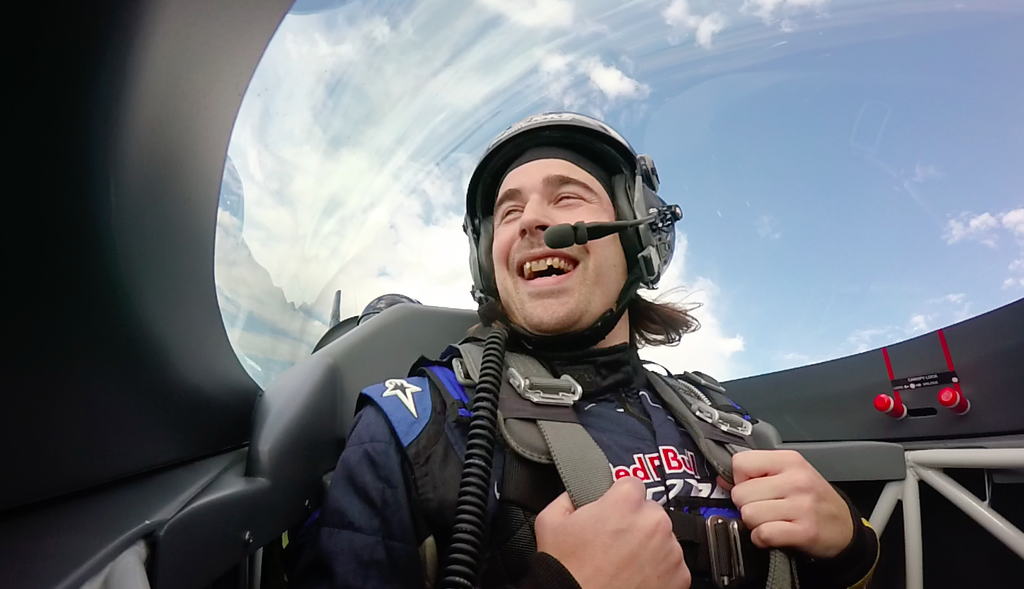
When Red Bull invited me to Las Vegas to fly in one of its racing planes, my first thought after accepting and learning it was going to be filmed was, "Jesus, I really hope I don't vomit."
My second thought was, "Jesus, I really hope I don't black out."
Then, after reading the medical waiver, I thought, "Jesus, this may have been a rather massive mistake."
This is what it said:
During this flight you will experience the acceleration of gravity and the pressure of G-forces.
When the aircraft is flown vertical, or pulled out of a loop, the G-force will increase. The pilot will talk you through the maneuvers and will tell you when to strain your muscles.
A short compression of the muscles in your arms, legs and abdomen is enough. Try to avoid turning your head when you are experiencing the acceleration of G-forces.
If we fly upside down completely RELAX. NO Straining. Try and ENJOY the view.
What had initially seemed like a rather fun day out was sounding more terrifying and dangerous with every passing minute.
The racing plane in question was a two-seater version of the super-light aircraft flown in the Red Bull Air Race series.
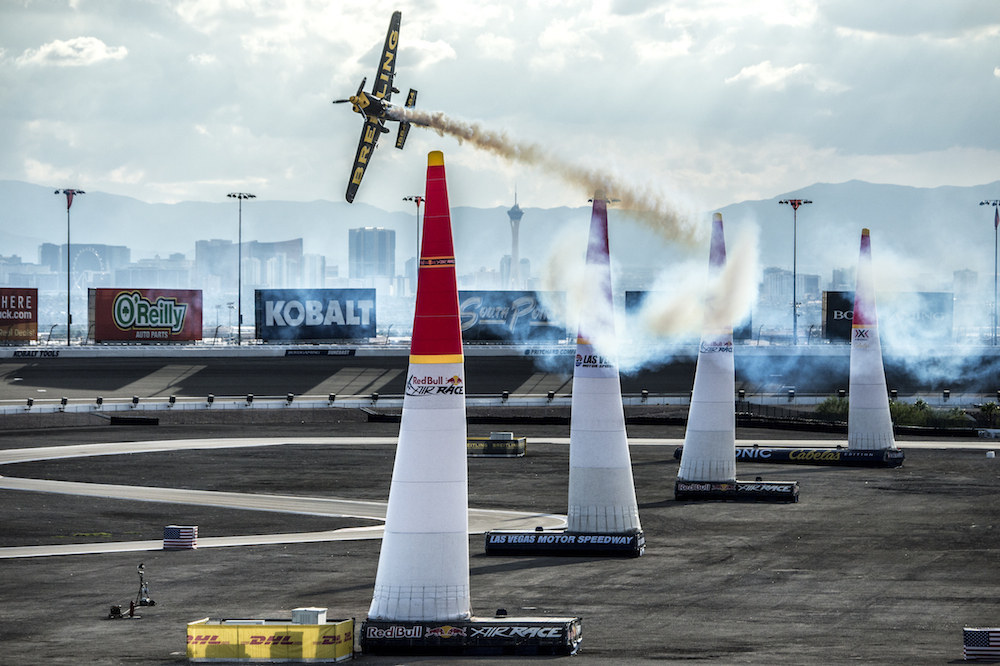
The pilots in the series perform incredible acrobatics while flying the aircraft – capable of speeds of almost 280mph – through inflatable pylons known as air gates.
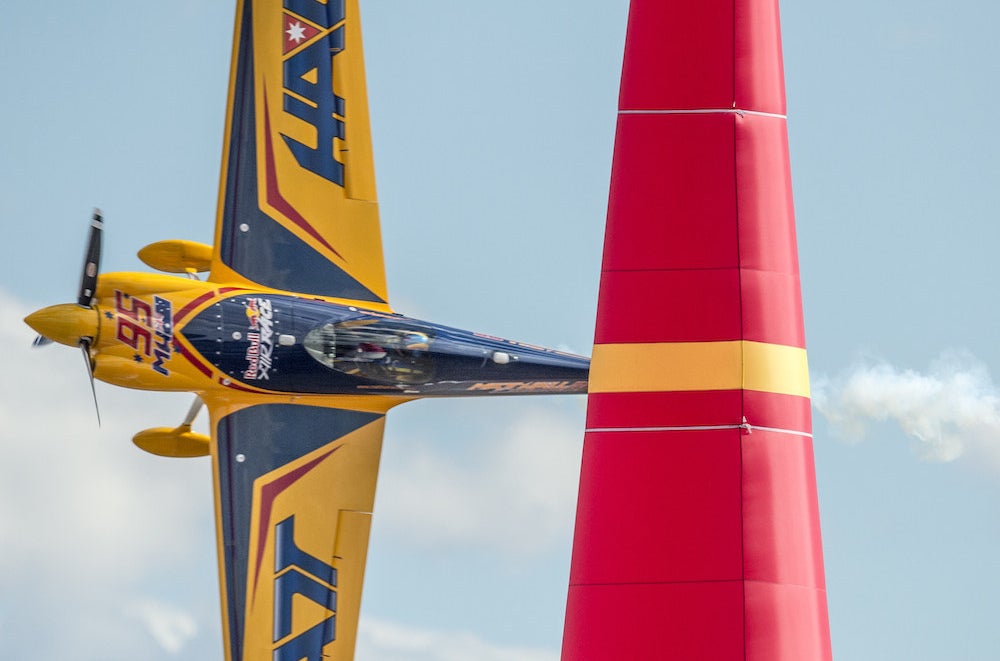

The Vegas race, the final stop of the season, was taking place at the Las Vegas Motor Speedway.
Watching the pilots practising and taking part in qualifying the day before my flight did little to ease the nerves. So I thought I'd ask the experts for some tips.
Britain's Paul Bonhomme was going into the event as a two-time champion looking to complete his hat trick of world titles (he would finish second in the Las Vegas event, win the championship, and subsequently announce his retirement).
If anyone was going to put my mind at rest, I thought, it was going to be 51-year-old Bonhomme, who, when he's not flying British Airways jumbos, is strapped into his racing plane competing in glamorous locations around the world.
I was wrong.
Bonhomme's advice came in three parts: Make sure you eat breakfast, always tense, and take a proper look around you.
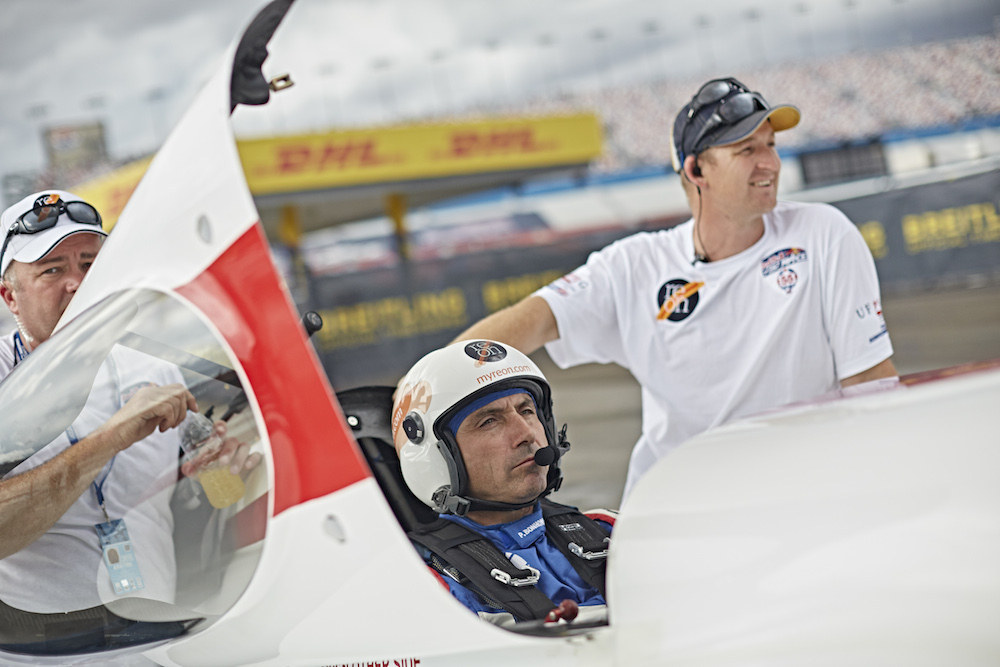
"When flying, tense yourself as if you're being driven fast in a car," he told me. "Just tense yourself up so all your bits don't move about, and look at the horizon, look outside to see where the world is."
Got it, eat and tense. I can just about do that. (The part about my bits moving around didn't sound too great though.)
"A lot of people stare ahead," Bonhomme said, "and then, if you watch a ballerina doing a twirl, their head will always fix on one object and their body moves – they're doing that, so they don't lose their balance. Look outside, look at the horizon, and you'll know which way is up."
Balance and nausea seemed a major theme. People kept asking me if I was worried I was going to be sick all over the plane and myself. Some of the smug veterans of the tour circuit told me how sick they had felt when they went up for the first time. Someone even told me that a virtual reality simulation of the flight had made them sick.
So I tried the virtual version out. And it was fine. Being sick, I decided, was not going to be a problem.
Blacking out, though, did sound like a real possibility.
Once again people shared horror stories of blacking out on their flight, of being woken by their pilot after the G-force became so intense their bodies simply shut down.
Bonhomme warned that this was a real possibility. He said my eyesight might start to go grey at the edges and fuzzy when I experienced the intense forces you feel in the planes as they perform incredible acrobatics at breakneck speeds.
OK, fine, I might black out momentarily, I told myself. It might be momentarily disorientating and a tad embarrassing on the film, but I'll get over it.
But then I began to worry: If I can black out – surely the other guy in the plane can, too? What if the pilot goes to the dark side? What do I do then? Land the plane myself or just glide around and hope he wakes up?
My flight was at 9am on Sunday. Early enough to get it all over and done with before properly waking up to the reality of what awaited me.

Rain, dark skies, and a fairly impressive storm brewing over the mountains in the Nevada desert awaited us when we got to the track that morning.
The forecast was for thunder and lightning throughout the day, not ideal conditions for hanging upside down in a flimsy plane with my bits moving around everywhere.
But weirdly, by this point, fears of a catastrophic failure – either of the plane or my body – had been put aside. All I wanted to do was get up there.
Upon arriving at the track, I was immediately handed my flight suit and parachute and met the pilot, Antanas Marciukaitis.
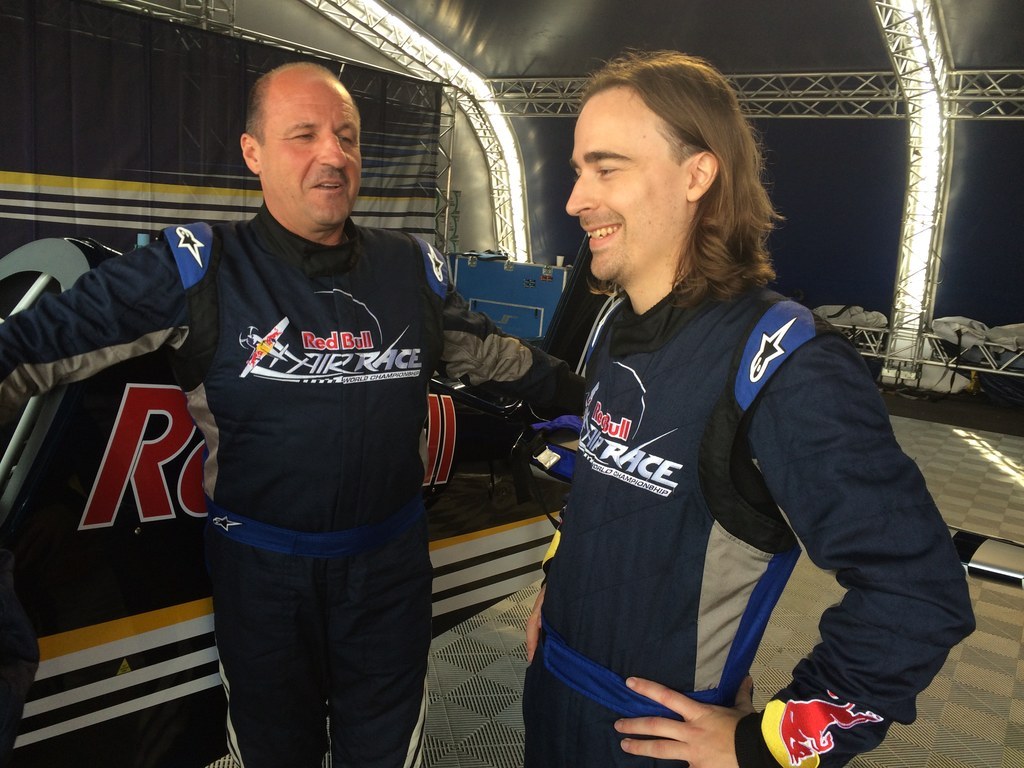
As we were the first flight to go up that morning, I then had to endure sitting on the runway for five minutes while the engine "warmed up" as the rain fell and dripped into the cockpit.
It was OK though. By the time it came to take-off, the weather had cleared up.
Antanas seemed in a jolly mood and I thought, "Well, this is all going to be just fine."
Look how calm I am at the exact moment we take off.
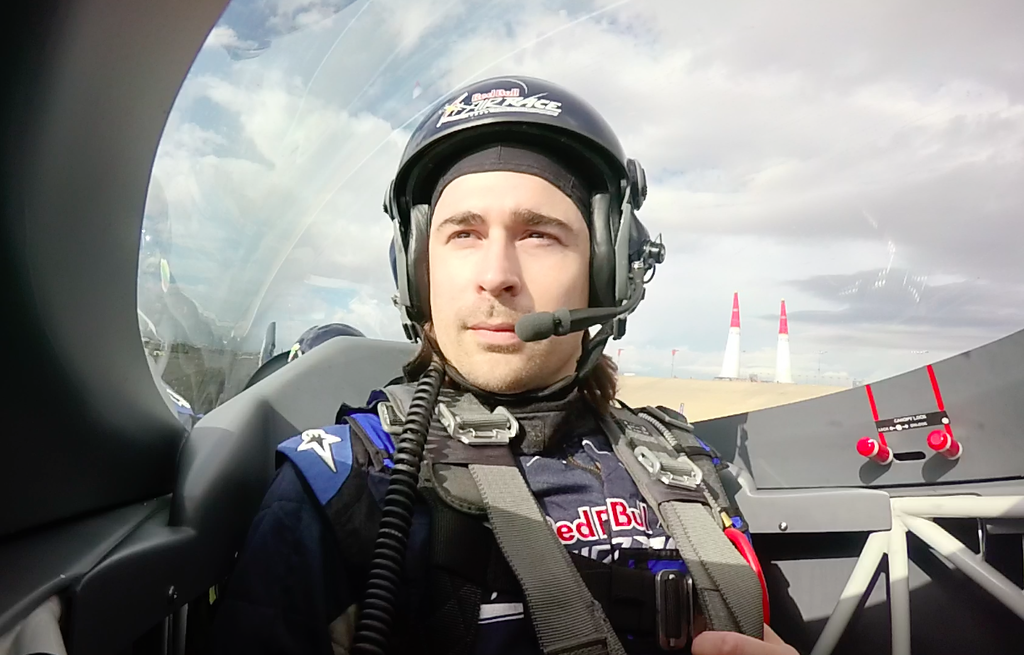
And how stupidly happy I look flying in between the inflatable pylons.
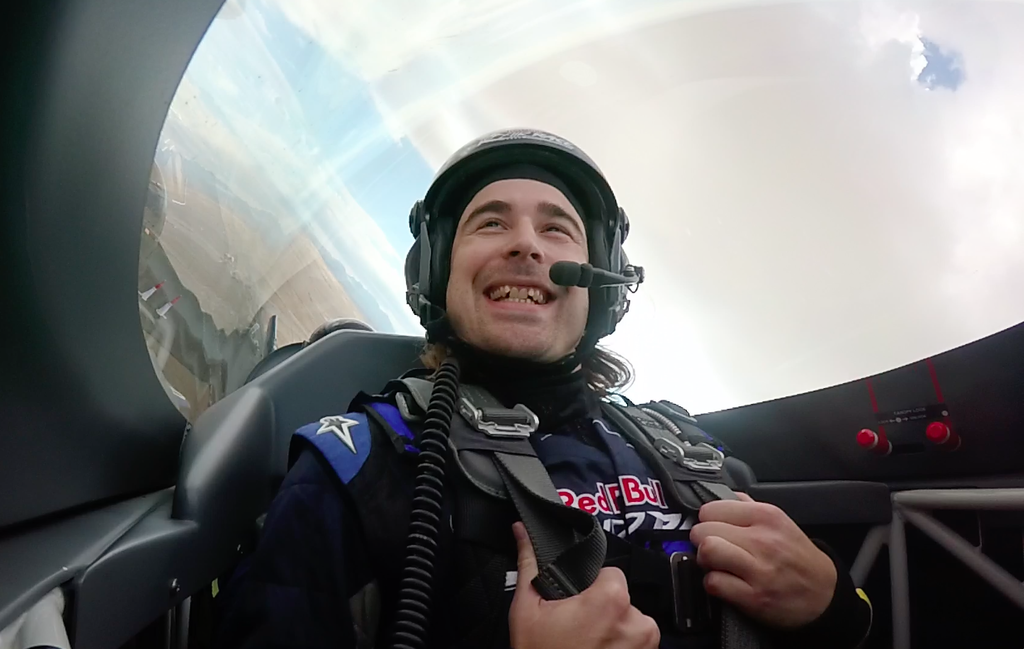
But then...
...something terrible happened to my face.
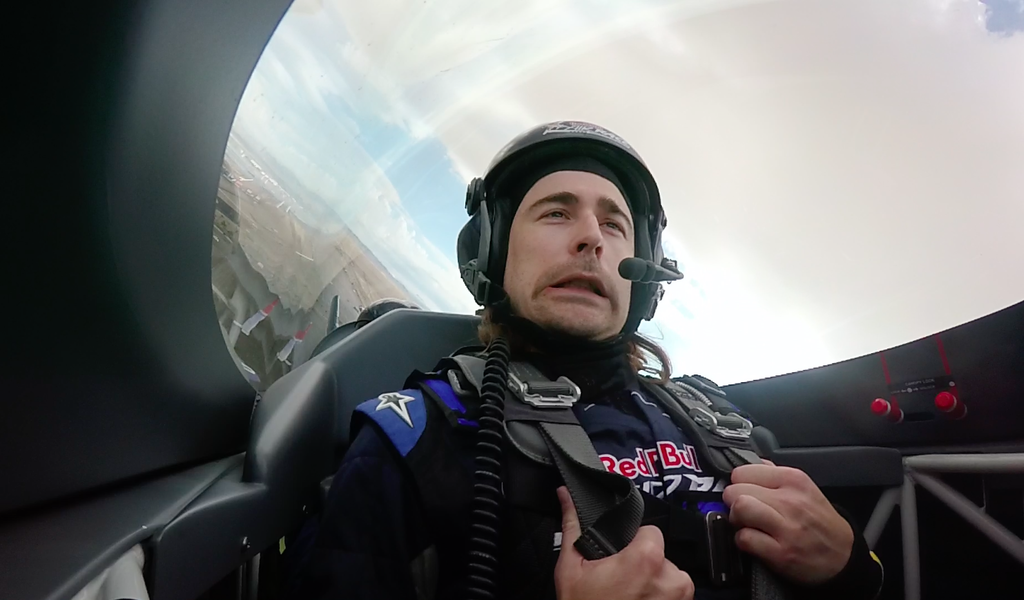
It was the G-force. I was expecting it to happen when the pilot did the acrobatic manoeuvres, the loop-the-loops, the crazy stuff – not at the start when we were just warming up.
The sudden change of course, at the speed we were travelling, made my face try to wrap itself around the back of my head. It was if it wanted to hide from what it was seeing and find sanctuary in the comfort of my hair.
Watching the video back, what's even more shocking is the manic smile I gave afterwards.
This was the part where my internal organs were going to switch places as my body was put under intense pressure.
The part where I would need to use the sick bag tucked into my sleeve – the sick bag I was made to take because someone once vomited all over the plane's controls and pissed everyone off.
The part where either I was going to pass out and wake up as the unknowing star of a viral video or have to land the plane when Antanas passed out.
But in actual fact, it was all rather glorious.
The world looked rather beautiful upside down.
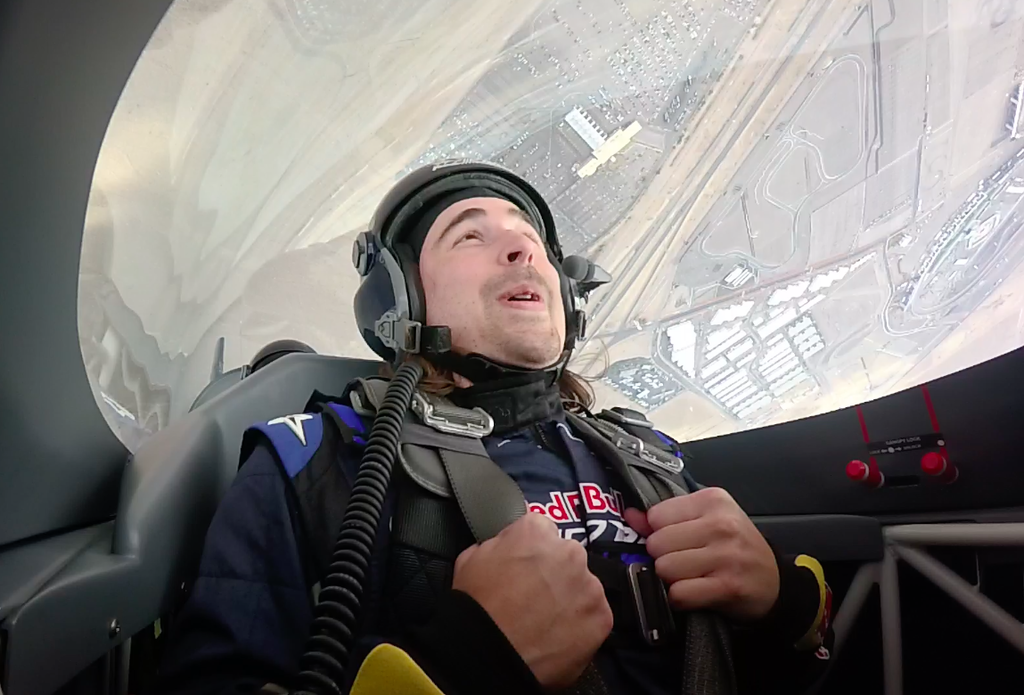
I couldn't actually hear what Antanas was saying while we doing the acrobatics. But that didn't matter. I knew when it was time to tense, and I knew when it was time to look up.
And then just as I was getting used to life as an acrobatic pilot (well, passenger), it was all over. We headed back to the landing strip. Everything was fine. There had been no vomiting, no blackouts.
Antanas said there was nothing else in the world he'd rather do than fly these machines, and having had just the briefest of experiences in one, I can now understand why. The adrenalin and euphoria of flying upside down at eye-watering speeds is unexpectedly addictive.
I want to do it again.
